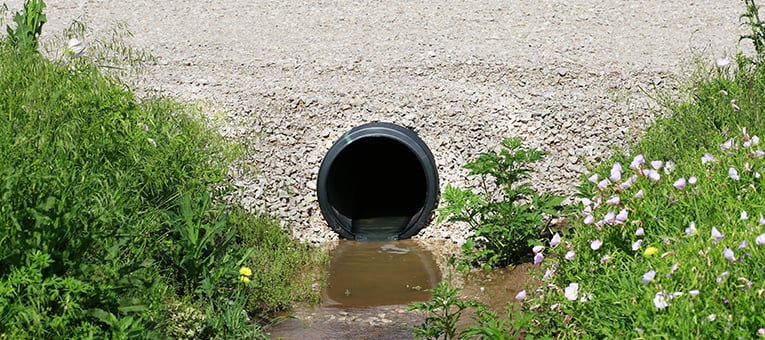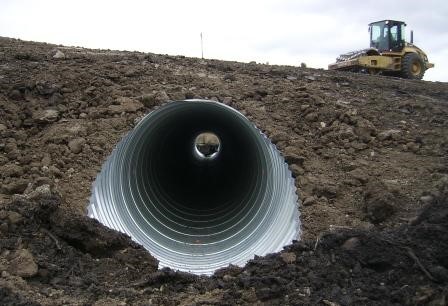Culvert Installation Made Easy: Step-by-Step Overview for Success
Installing culverts may look like an uncomplicated task, but making sure a successful result needs careful preparation and implementation. From selecting the ideal culvert size to integrating proper drainage actions, each action in the installation procedure plays a crucial duty in the capability and long life of the culvert system. By adhering to a methodical approach and paying interest to vital information, the installment can proceed smoothly, decreasing possible concerns down the line. Stay tuned to reveal the essential steps and considerations that can make culvert installation a smooth and effective undertaking.
Picking the Right Culvert Size
Selecting the proper culvert dimension is vital for guaranteeing efficient water circulation and structural stability in culvert setup tasks - Pad Construction. The size of the culvert directly affects the circulation ability of water via the framework. A culvert that is as well tiny can result in flooding and overflow, while one that is too big may result in decreased water rate, potentially triggering debris buildup and obstructions
To determine the right culvert dimension, aspects such as the watershed location, top flow rates, and hydraulic effectiveness need to be very carefully taken into consideration. Estimations based on these criteria help in choosing a dimension that can adequately deal with the anticipated water quantity while lessening the threat of obstructions and structural failing.
It is vital to consult design guidelines and standards to ensure that the selected culvert dimension fulfills the project requirements and neighborhood laws (Pad Construction). By selecting the right culvert size, project supervisors can optimize water circulation, protect against possible problems, and enhance the general performance and long life of the culvert installment
Preparing the Setup Site
Effective culvert installment requires careful prep work of the installation website to ensure optimum structural support and functionality. Before commencing the installment process, it is essential to get rid of the website of any type of debris, plants, or obstructions that can restrain the culvert's positioning.
Furthermore, it is essential to consider variables such as soil composition, groundwater degrees, and ecological impacts when preparing the setup website. Conducting an extensive site analysis can help recognize any kind of possible obstacles or threats that might impact the culvert's efficiency. By taking the time to prepare the installation site appropriately, you can aid ensure an effective culvert setup that fulfills structural needs and guarantees lasting functionality.
Putting the Culvert Appropriately

The quality at which the culvert is placed is vital for preserving a correct incline for water circulation. Furthermore, the culvert ought to be oriented appropriately to guarantee that the inlet and electrical outlet are in the appropriate locations. Pad Construction.
Backfilling and Condensing the Soil
Correct backfilling and compaction of the click reference dirt around the culvert is vital to guarantee security and protect against potential problems in the future. Once the culvert is correctly put, the next important step is to backfill the location around it with appropriate material.
Compaction aids in decreasing the chances of negotiation and makes sure uniform support around the culvert. It is vital to compact the soil evenly on all sides of the culvert to keep its architectural stability.
Correct backfilling and compaction not only offer stability to the culvert but likewise aid in protecting against soil erosion and maintaining the durability of the culvert system.
Guaranteeing Correct Drain Combination
Integrating effective drainage services plays a vital function in the overall performance and durability of culvert installations. Correct water drainage assimilation is important for handling water circulation, preventing erosion, and making sure the architectural stability of the culvert system. To achieve this, it is vital to design an extensive water learn the facts here now drainage strategy that thinks about factors such as the quantity of water expected, the topography of the area, and the kind of soil present.

Additionally, integrating features like disintegration control procedures, such as riprap or plants, can further enhance the effectiveness of the water drainage system. By thoroughly intending and carrying out these drainage services, culvert installments can operate successfully and endure the examination of time.
Final Thought
To conclude, appropriate culvert installation is critical for preserving efficient drain systems. By selecting the right culvert dimension, preparing the installation site, placing the culvert correctly, backfilling and condensing the soil, and making sure proper drain combination, success can be achieved. Following these steps will help make sure the longevity and performance of the culvert, ultimately adding to the check this overall success of the drainage system.